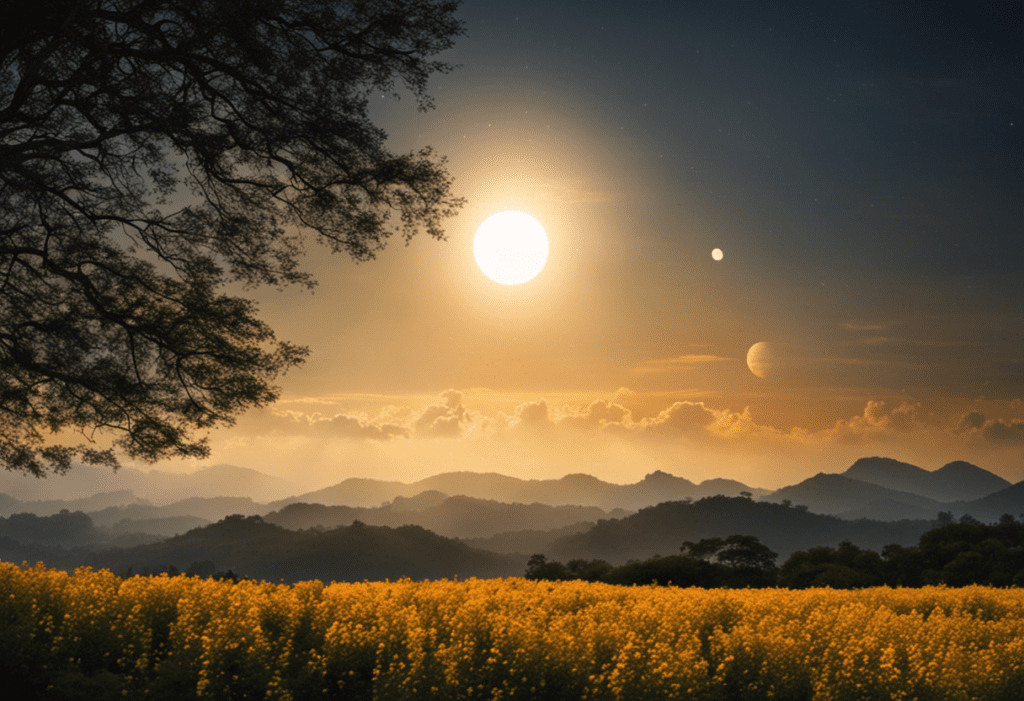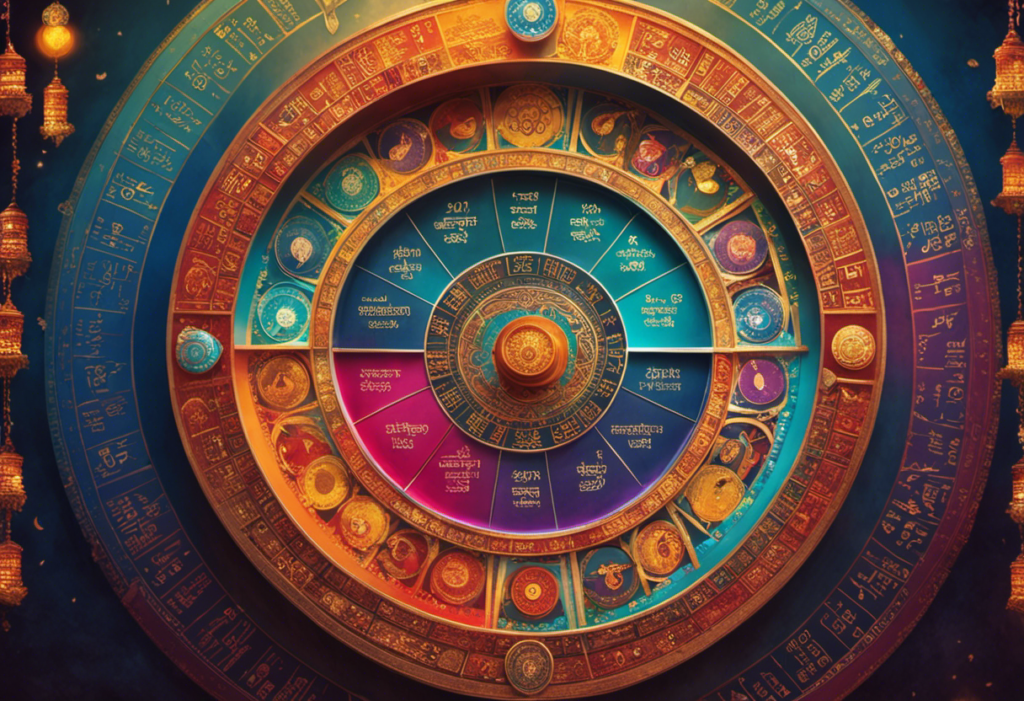Discover the captivating world of Vikram Samvat, a unique calendar system that intricately weaves together the solar and lunar cycles.
This article unveils the hidden secrets behind the solar-lunar hybrid nature of Vikram Samvat, shedding light on its origins, evolution, and the harmonious integration of these celestial elements.
Through meticulous research and analysis, we delve into the cultural traditions and festivals that are deeply rooted in this ancient calendar system.
Prepare to be enthralled by the fascinating interplay of the sun and moon in Vikram Samvat.
Key Takeaways
- Vikram Samvat is a calendar system that originated in 57 BCE and is widely used in Nepal and India.
- It incorporates both solar and lunar components to accurately represent solar and lunar events.
- Solar calculations determine the length of the year and timing of seasons, while lunar phases determine dates and timing of events.
- The harmonious integration of solar and lunar cycles in Vikram Samvat is achieved through sophisticated celestial timekeeping methods.
The Origins and Evolution of Vikram Samvat
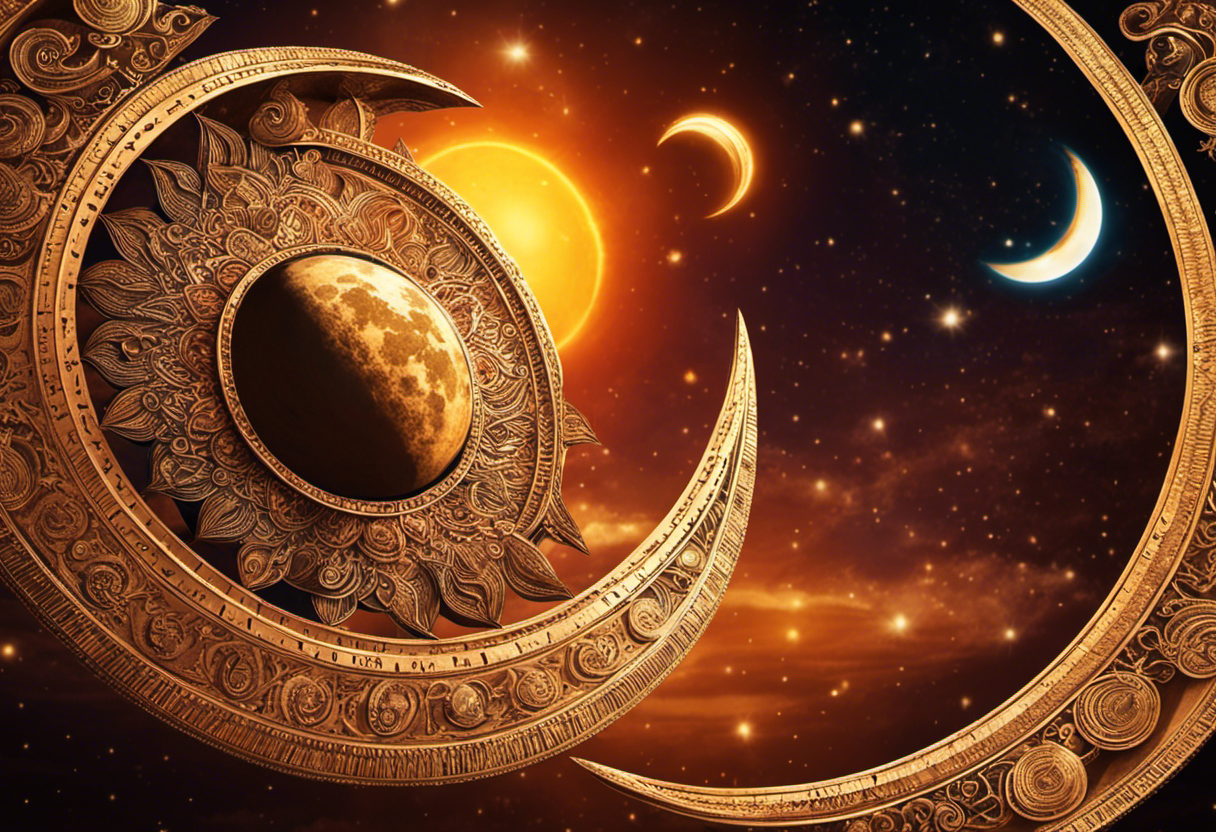

As we delve into the origins and evolution of Vikram Samvat, it becomes evident that its unique solar-lunar hybrid nature has played a significant role in shaping its development. Vikram Samvat, also known as the Vikram Era, is a calendar system that is widely used in Nepal and India. Its evolutionary timeline can be traced back to the legendary Emperor Vikramaditya of Ujjain, who established this calendar system around 57 BCE.
The cultural significance of Vikram Samvat cannot be overstated. It serves as a vital tool for religious and cultural events, as well as for agricultural purposes. The calendar follows a solar-lunar pattern, with lunar months and solar years. This combination allows for a more accurate representation of time, aligning with both the lunar and solar cycles.
Throughout its evolution, Vikram Samvat has undergone various modifications to improve accuracy and synchronization with astronomical phenomena. The calendar has witnessed adjustments to its intercalary months and leap years over time, ensuring a harmonious balance between the lunar and solar cycles.
The evolutionary timeline of Vikram Samvat showcases its cultural resilience and adaptability. Despite numerous reforms, it has retained its cultural importance and continues to be widely used in various religious and social contexts. The solar-lunar hybrid nature of Vikram Samvat has not only enhanced its accuracy but has also contributed to its enduring cultural significance.
Understanding the Solar Component in Vikram Samvat


The solar component in Vikram Samvat plays a crucial role in its overall structure and accuracy. Vikram Samvat is a hybrid calendar system that combines both solar and lunar calculations. The solar calculations in Vikram Samvat are based on the position of the sun in relation to the earth. This component determines the length of the year and the timing of the seasons.
The solar component in Vikram Samvat is of great astrological significance. The movement of the sun affects various aspects of life, including agriculture, festivals, and auspicious timings for events. The accurate calculation of the solar component ensures that these important events and activities are aligned with the solar calendar.
The solar calculations in Vikram Samvat are meticulously done to ensure precision and accuracy. The calendar takes into account the tilt of the earth’s axis, the elliptical orbit of the earth around the sun, and the varying speed of the earth in its orbit. These factors are considered to calculate the exact position of the sun for each day of the calendar year.
Exploring the Lunar Element in Vikram Samvat
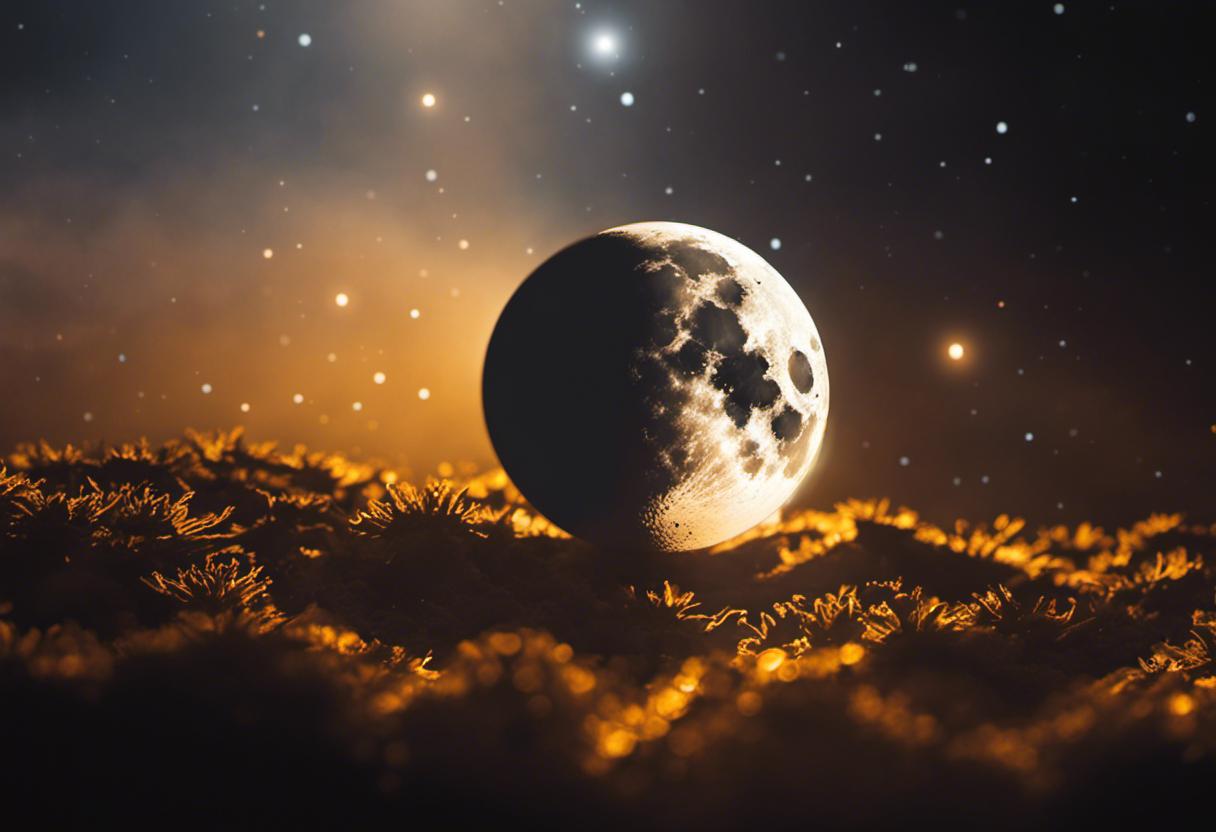

One significant aspect of Vikram Samvat is the interplay between the lunar element and the solar calculations. The lunar calendar holds great importance in Vikram Samvat as it is based on the cycles of the moon. Here are a few key points to explore the lunar element in Vikram Samvat:
- Lunar Calendar: Vikram Samvat follows a lunar calendar, which means that the months are based on the lunar cycles. Each month begins with the new moon and ends with the next new moon. This lunar calendar is used in various religious and cultural festivals celebrated throughout the year.
- Lunar Phases: The lunar phases, such as the waxing and waning of the moon, play a significant role in determining the dates and timing of various events in Vikram Samvat. The new moon (Amavasya) and the full moon (Purnima) hold special importance and are considered auspicious for certain activities and rituals.
Understanding the lunar element in Vikram Samvat helps us appreciate the deep connection between the lunar calendar and the cultural fabric of the people who follow this calendar. The interplay between the lunar and solar calculations in Vikram Samvat creates a unique and harmonious blend, reflecting the rich traditions and beliefs of the people who observe this ancient calendar system.
The Harmonious Integration of Solar and Lunar Cycles


By seamlessly merging the calculations of solar and lunar cycles, Vikram Samvat showcases a perfect integration of celestial elements in its calendar system. The harmonious integration of solar and lunar cycles is the foundation of Vikram Samvat’s celestial timekeeping. This synchronization allows for an accurate representation of both solar and lunar events, ensuring a comprehensive and precise calendar system.
The solar lunar synchronization in Vikram Samvat is achieved through meticulous calculations and observations. The calendar system takes into account the Earth’s orbit around the sun and the moon’s orbit around the Earth. These calculations are essential in determining the length of a year and the occurrence of lunar months.
The solar aspect of Vikram Samvat is represented by the solar year, which consists of twelve lunar months. However, to align the lunar months with the solar year, an intercalary month, called Adhik Maas, is added every two to three years. This ensures that the lunar months remain synchronized with the solar year, allowing for an accurate representation of both solar and lunar events.
The harmonious integration of solar and lunar cycles in Vikram Samvat is a testament to the sophisticated celestial timekeeping methods employed by ancient Indian astronomers. This integration allows for a comprehensive understanding of both solar and lunar events, making Vikram Samvat a remarkable calendar system that continues to be used to this day.
Cultural Traditions and Festivals in Vikram Samvat
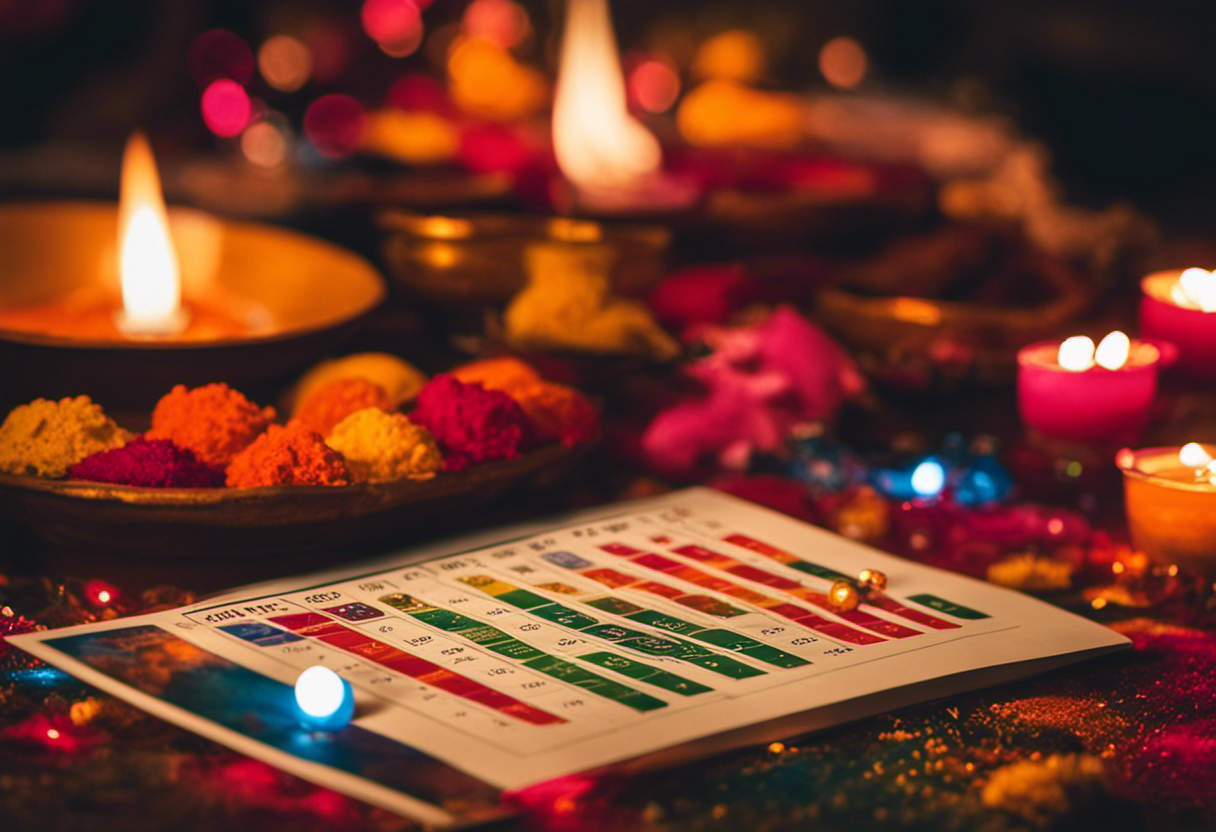

With a rich tapestry of cultural traditions and a vibrant array of festivals, Vikram Samvat showcases the diversity and vibrancy of Indian culture. The celebrations and religious practices associated with this calendar system reflect the deep-rooted beliefs and customs of the people.
- Festivals:
- Diwali: Known as the Festival of Lights, Diwali is one of the most significant festivals in Vikram Samvat. Celebrated in October or November, it symbolizes the victory of light over darkness and good over evil. People illuminate their homes with earthen lamps and fireworks, exchange gifts, and indulge in feasts.
- Holi: Holi is a colorful and joyous festival celebrated in March. It signifies the arrival of spring and the triumph of good over evil. People throw colored powders and water at each other, dance to lively music, and enjoy traditional sweets and delicacies.
- Religious Practices:
- Navratri: Navratri is a nine-night festival dedicated to the worship of the Hindu goddess Durga. People observe fasting, perform traditional dances like Garba and Dandiya, and participate in religious rituals to honor the divine feminine energy.
- Raksha Bandhan: This festival celebrates the bond between brothers and sisters. Sisters tie a protective thread, known as a rakhi, around their brothers’ wrists, and in return, brothers give gifts and promise to protect their sisters. It symbolizes love, care, and the sacred relationship between siblings.
These festivals and religious practices in Vikram Samvat not only bring communities together but also serve as a platform to pass down cultural values and beliefs from one generation to another. They are a testament to the deep-rooted traditions that have shaped Indian society for centuries.
Conclusion
In conclusion, the Vikram Samvat calendar system is a fascinating example of the harmonious integration of solar and lunar cycles. Its origins and evolution showcase a deep understanding of celestial movements and the cultural traditions and festivals associated with it.
The solar-lunar hybrid nature of Vikram Samvat highlights the rich tapestry of timekeeping methods and the cultural significance attached to them. As we delve into its intricate details, we are reminded of the beauty and complexity of ancient calendars, evoking a sense of wonder and admiration.

